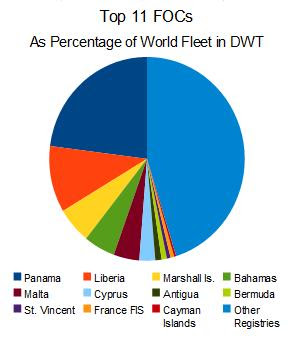Ahmed Abu Khatallah, accused by the U.S. as being the ringleader in the attack on the American mission in Benghazi, Libya, in 2012, has been brought to federal court in Washington, D.C.
Due to her draft and the shallowness of the Potomac River, the New York most likely stayed out at sea or somewhere in the Chesapeake Bay before transporting Abu Khattala from her flight deck via helicopter or V-22 Osprey to Washington.
And since Abu Khattala has to be transported directly from the ship into the District, that leaves only one airfield that services military aircraft: Joint Base Anacostia-Bolling.
[June 18]
U.S. officials said Ahmed Abu Khattala was being held on the USS New York, a Navy amphibious transport dock ship in the Mediterranean Sea.
| Northrop Grumman Ship Systems | |
| Operators: | United States Navy |
| Preceded by: | Austin-class amphibious transport dock Newport-class tank landing ship Charleston-class amphibious cargo ship Harpers Ferry-class dock landing ship |
| Succeeded by: | N/A—current authorized amphibious transport dock line |
| Cost: | $1,602.5 million (ave. for class, FY2012)[1] $2,021.4 million (last ship, FY2012)[1] |
| Built: | 2000–2017 (forecast)[1] |
| In commission: | 2006–present |
| Building: | 2 |
| Planned: | 12 |
| Completed: | 9 |
| Cancelled: | 1 |
| Active: | 9 |
| General characteristics [2] | |
|---|---|
| Type: | Amphibious transport dock |
| Displacement: | 25,300 t (full) |
| Length: | 684 ft (208 m) |
| Beam: | 105 ft (32 m) |
| Draft: | 23 ft (7.0 m), full load |
| Propulsion: | Four sequentially turbocharged marine Colt-Pielstick diesel engines, two shafts, 41,600 shp |
| Speed: | In excess of 22 knots (41 km/h) |
| Boats & landing craft carried: | Two LCACs (air cushion); or 1× LCU (conventional) 14× Amphibious Assault Vehicles |
| Complement: | Crew: 28 officers, and 333 enlisted men Landing force: 66 officers, and 633 enlisted men |
| Sensors and processing systems: | AN/SPS-48G, AN/SPQ-9B[1] |
| Electronic warfare & decoys: | AN/SLQ-32[1] |
| Armament: | 2× Bushmaster II 30 mm close-in-guns two Rolling Airframe Missilelaunchers two Mk 41 eight-cell VLS for quad-packed ESSMs (if required) Several twin M2 Browning machine gun turrets |
| Aircraft carried: | Launch or land up to four CH-46 Sea Knight helicopters, or up to two MV-22 Osprey tilt-rotor aircraft simultaneously with room to place four MV-22s on the flight deck and one in the hangar deck |
Abu Khatallah is now on a slow boat to the United States -- a U.S. Navy ship in the Mediterranean, where he is facing interrogators.
They're taking him by sea, rather than by air, in order to give investigators "maximum time to question him," U.S. officials said.
Such interviews typically are done by the FBI-led High Value Detainee Interrogation Group, or HIG, that includes agents from multiple law and intelligence agencies.
 U.S. Navy Boatswain's Mate 2nd Class Cory Esworthy, bottom left, a search and rescue swimmer, assists with transporting persons in distress from a rigid-hull inflatable boat to armed forces of Malta offshore patrol vessel P61 June 7, 2014, in the Mediterranean Sea.
U.S. Navy Boatswain's Mate 2nd Class Cory Esworthy, bottom left, a search and rescue swimmer, assists with transporting persons in distress from a rigid-hull inflatable boat to armed forces of Malta offshore patrol vessel P61 June 7, 2014, in the Mediterranean Sea.The Bataan and the guided missile frigate USS Elrod (FFG 55) rendered assistance and provided food, water, medical attention and temporary shelter to 282 people after receiving a report that an Italian military marine patrol aircraft sighted six small vessels, one of which was sinking.
[June 2]
Sailors rush after removing chock and chains from an AH-1W Super Cobra before it takes off from the flight deck aboard the multipurpose amphibious assault ship USS Bataan (LHD 5). Bataan, with elements of the 22nd Marine Expeditionary Unit, is operating in the U.S. 6th Fleet area of operations to augment U.S. Crisis Response forces in the region.
[May 29]
 |
| 1,000 Marines moving toward Libya on USS Bataan |
The U.S. military has ordered the amphibious assault ship USS Bataan, with 1,000 Marines on board, to move toward the Libyan coast, the Pentagon confirmed May 28, a day after American officials urged citizens to leave the restive country immediately. The Bataan, wasn’t expected to be positioned off the Libyan coast. It more likely would remain in the region, and could move or respond quickly if called; it had been taking part in military exercises in the Red Sea when it got notice to move into the Mediterranean Sea. The Marines based out of Moron are part of a crisis response unit focused on embassy security that was created after the attack on the U.S. diplomatic compound in Benghazi, Libya, on September 11, 2012, that killed U.S. Ambassador Christopher Stevens and three other Americans.
U.S. military officials did not say where the USS Bataan was located in the Mediterranean, but one dismissed reports that it was near the Libyan coast, saying it had only passed through the Suez Canal on May 27.
[March 23 2011]

The USS Bataan Amphibious Ready Group is deploying to the Mediterranean Sea to aid international efforts in Libya.
The group leaves southeast Virginia onMarch 23. It will be relieving units from the USS Kearsarge Amphibious Ready Group.
The Bataan Amphibious Ready Group is made up of the amphibious assault ship USS Bataan, amphibious transport dock ship USS Mesa Verde and the dock landing ship USS Whidbey Island.
The ships will transport Marines, a combat helicopter squadron and a team of surgeons. USS Bataan (LHD-5) is a Wasp-class amphibious assault ship commissioned in 1997
















